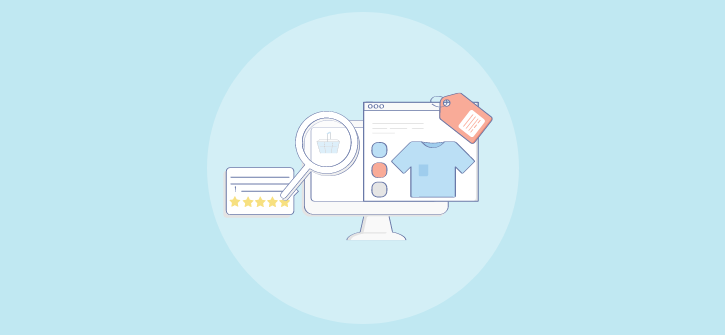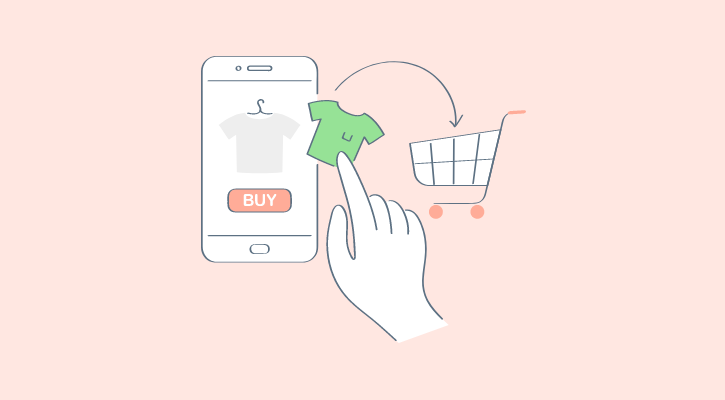Only 3 out of every 100 visitors to an online store end up making a purchase.
The rest leave without buying — a frustrating reality every eCommerce owner, marketer, and CRO specialist faces daily. You’re not alone in that struggle.
In my experience working with growth-driven teams, I’ve seen a common theme: most are swimming in data but starving for direction. They track bounce rates, cart abandonments, and dozens of analytics, yet still feel lost when it comes to translating numbers into meaningful actions.
Meanwhile, subtle friction points — like a slow checkout flow, missing trust signals, or a clunky mobile design — quietly chip away at revenue.
That’s where eCommerce Conversion Rate Optimization (CRO) truly makes a difference. It’s not about chasing vanity metrics or applying quick fixes. It’s about understanding customer behavior, removing barriers, and creating a store experience that builds trust and encourages every shopper to click “buy now.”
In this article, I’ll break down proven CRO strategies and show you exactly how to implement them to drive real growth. Let’s dive in.
What Is a Good E-Commerce Conversion Rate + How It Is Calculated
Typically, the e-commerce conversion rate is about 2.5-3%.
To achieve real e-commerce conversion rate optimization, you must aim for a conversion rate above the average. Once you reach that goal, you can then focus on using more advanced strategies to improve your conversion rate further.
Calculating the conversion rate is pretty straightforward using the formula below.

For instance, if you had 50 conversions out of 1,000 interactions, your conversion rate would be 5%, as (50 ÷ 1,000)*100 = 5%.
How to Increase Conversion Rate in E-Commerce
If you want to increase conversion rate optimization for e-commerce above the average, follow these tricks and tested strategies.
If you’re short on time, here’s the summary of the CRO strategies I will discuss in depth.
| Strategy | What It Does | How to Do It | Best Suited For |
|---|---|---|---|
| 1. Optimize Checkout Process | Reduces cart abandonment caused by long/forced steps | Shorten steps, simplify forms, enable one-click pay | All e-commerce (esp. fashion, electronics, FMCG) |
| 2. Use High-Quality Visuals | Builds trust by replicating “in-store” experience | Add multiple angles, 360° views, videos, zoom, lifestyle shots | Fashion, furniture, electronics, and luxury goods |
| 3. Offer Free Shipping | Eliminates surprise costs that drive drop-offs | Set thresholds, absorb cost smartly, and promote clearly | Mid-high AOV stores (fashion, electronics, beauty) |
| 4. Detailed Product Descriptions | Answers buyer doubts and increases confidence | Lead with benefits, structured format, FAQs, scannable | Tech products, digital goods, subscriptions, services |
| 5. Mobile Optimization | Improves conversions where 60%+ sales happen | Mobile-first design, faster load, compress media, real-device tests | All e-commerce (critical for grocery, fast fashion, D2C) |
| 6. Live Chat Support | Prevents abandonment by resolving doubts instantly | AI + human chat, proactive triggers, system integration | Electronics, appliances, high-ticket items |
| 7. Add Social Proof | Builds trust through reviews and UGC | Enable reviews, add testimonials, display badges | Fashion, health & wellness, consumer goods |
| 8. Clear CTAs | Guides shoppers to take action without hesitation | Above-the-fold CTAs, consistency, urgency messaging | Subscription boxes, digital goods, beauty |
| 9. Email Capture | Turns exiting visitors into nurturable leads | Exit-intent popups, segmentation, CRM sync | D2C, subscription businesses, FMCG |
| 10. Easy Navigation | Keeps shoppers engaged and reduces bounce | Clear menus, search, filters, breadcrumbs, test user flow | Large catalogs (electronics, home décor, retail marketplaces) |
| 11. Transparent Return Policies | Removes risk perception and builds trust | Clear terms, human language, proof, reminders | Fashion, footwear, lifestyle products |
| 12. Personalized Popups | Boosts conversions by showing tailored offers | Exit-intent triggers, behavior-based offers, CRM sync | D2C brands, global e-commerce, high repeat purchases |
| 13. Highlight Security & Compliance | Reassures buyers their payments are safe | SSL, badges, GDPR compliance, secure payments | All e-commerce (critical for startups/new brands) |
| 14. Guest Checkout | Reduces friction for first-time buyers | Enable guest checkout, social logins, post-purchase accounts | All e-commerce (especially fashion & consumer retail) |
Let’s get started:
1. Optimize Your Checkout Process
A complicated checkout is one of the biggest conversion killers in e-commerce. Nearly 25% of shoppers abandon their carts because they’re forced to create an account, and another 18% leave because the process is too long or confusing. That’s a lot of lost revenue from something you can fix with a few smart changes.
Here’s How:
- Shorten Steps: If checkout takes over three screens, merge steps like shipping and billing. Using built-in theme settings or checkout plugins, add a progress bar at the top of the page so shoppers know exactly where they are.
- Simplify Forms: Most e-commerce platforms already support browser autofill, so make sure your checkout uses clear, standard labels like “First Name” or “Email.” If you use a custom checkout, ask your developer to add autocomplete attributes to form fields so saved details fill in automatically. This saves customers time and reduces drop-offs.
- Offer One-Click Pay: Activate digital wallets such as Apple Pay, Google Pay, or PayPal through your payment settings to make repeat purchases effortless.
You’ll convert more abandoned carts into successful sales by removing friction and making checkout smooth.
2. Use High-Quality Visuals for Products
Shoppers can’t touch or feel products online, which makes visuals one of the strongest levers for boosting conversions. Low-res or stock photos create doubt, while detailed, interactive visuals build trust and help customers hit “buy now.”
Take Apple, for instance. Their product pages show multiple angles, lifestyle shots, and interactive views, giving shoppers the confidence that what they see is exactly what they’ll get.

Here’s How to Do It:
- Show Multiple Angles: Upload at least 4–6 high-res product images from the front, back, sides, and close-up. Most e-commerce platforms let you add various media files to each product page.
- Add 360° Views: Capture 24–36 photos of your product at different angles and upload them into a 360° viewer tool. Plugins like Magic 360, Sirv, or WebRotate 360 work across popular platforms and let shoppers spin products like in-store.
- Use Product Videos: Embed a short 30–60 second clip in the product gallery to show the item in action. Tools like Vimeo, Wistia, or built-in video upload features make this easy.
- Enable Zoom: Activate the zoom option in your product page settings, or use plugins such as Magic Zoom Plus, Cloud Zoom, or Zoom Magnifier to let shoppers inspect fine details.
- Model or Context Shots: Add lifestyle photos showing the product on real people or in everyday settings to help buyers visualize ownership.
3. Offer Free Shipping
“Free” is one of the most powerful words in e-commerce and an effective tool to optimize your e-commerce conversion. Studies show that 55% of shoppers abandon their carts due to unexpected charges like shipping, making free shipping one of the strongest incentives to complete a purchase. But how do you make it work without eating into your margins?
Here’s How:
- Set Thresholds: Instead of free shipping on every order, set a minimum order value that makes sense for your margins. For example, if your average order value is $45, test a threshold at $60. This nudges shoppers to add more items to qualify.
- Benchmark Costs: Use your past data to find the average shipping fee per order. If it’s $6, you can either absorb it into product pricing or offer free shipping only on orders where margins can cover it.
- Promote Clearly: Highlight the offer on your product pages, banners, and cart page using hello bars so shoppers don’t discover shipping costs too late. You can gate the free shipping code behind email capture to grow your email list just like Sunbasket does.

- Use Popups Strategically: Use exit-intent or cart popups to display a real-time reminder like “You’re $10 away from free shipping.” Tools like Sleeknote or Justuno help you with this.
4. Provide Detailed Product Descriptions
When people shop online, they don’t get to hold, touch, or test your product. That’s why your description has to do the heavy lifting. A vague, feature-only write-up leaves shoppers second-guessing, but a clear, benefit-driven description builds trust and gives them the confidence to hit “buy.”
Here’s How You Can Nail It:
- Lead With Benefits, Not Just Features: Don’t just say “Laptop with 16GB RAM.” Say “Run multiple apps smoothly without lag, thanks to 16GB RAM.” Always spell out what a feature actually does for the buyer.
Here’s an example from ecommerce industry giant, Amazon:

- Use a Structured Format: Organize details into sections like Overview, Benefits, Specs, FAQs. It keeps things clear whether you’re selling electronics, groceries, digital products, or services.
- Answer Common Objections: Think about what buyers might hesitate over — shipping timelines, compatibility, subscription terms, return policies — and cover those upfront.
- Make It Scannable: Use short sentences, bullet points, and bold highlights so it’s easy to read on a phone.
- Test and Refine: Try out different versions (benefit-focused vs. spec-heavy) with tools like Google Optimize, Optimizely, or VWO. They let you split traffic between versions and show which one actually drives more sales.
5. Work on Mobile Optimization
Mobile commerce accounted for 60% of global ecommerce sales in 2023, and experts predict this number will keep climbing. You see, shoppers expect fast, smooth browsing on their phones, and if your site isn’t mobile-ready, you’re losing conversions before checkout.
Here’s How to Fix It:
- Adopt Mobile-First Design: Build your store layout with phones in mind first, not desktops. Walmart is the biggest example of this:
 Did you notice the larger tap-friendly buttons, simplified menus, and sticky “Add to Cart” buttons that stay visible as users scroll? Yes, that’s what mobile optimization looks like.
Did you notice the larger tap-friendly buttons, simplified menus, and sticky “Add to Cart” buttons that stay visible as users scroll? Yes, that’s what mobile optimization looks like. - Benchmark Site Speed: E-commerce websites that load in a second see 2.5x higher conversions compared to those loading in five seconds. Test your site on Google PageSpeed Insights or GTmetrix. Aim for mobile load times under 3 seconds.
- Cut Heavy Assets: Compress product images, thumbnails, and videos without losing quality. Tools like TinyPNG or ImageOptim make this quick.
- Streamline Popups: Make sure your discount popups are mobile-friendly, easy to close, and don’t cover the entire screen.
- Test on Real Devices: Don’t rely on desktop previews. Check your site on iOS and Android phones to catch navigation or checkout issues before your customers do.
6. Provide Live Chat Support
Shoppers often hesitate when they can’t find quick answers about a product, price, or delivery timeline. Those unanswered questions are a big reason carts get abandoned but live chat can step in to save the sale. By offering real-time support, you remove friction, build trust, and keep buyers moving toward checkout.
Here’s How to Do It:
- Blend AI With Human Support: Set up an AI chatbot to handle common questions instantly (e.g., “Where’s my order?”). Route more complex queries to a live agent so customers always feel supported without waiting. For example:
- Aim for Instant Responses: Research shows that customers expect replies within 30–60 seconds on chat. Use proactive triggers to greet visitors on key pages like pricing or checkout with “Need help deciding?” messages.
- Personalize Assistance: Use proactive chat invitations, for example, if someone lingers on the payment page, pop up with an offer to help.
- Integrate With Your Systems: Connect chat to your CRM or email automation tool so no lead or conversation gets lost. Platforms like ProProfs Chat, Intercom, or Tidio make this seamless.
7. Add Social Proof
A lack of trust is one of the biggest reasons shoppers abandon a site. Nearly 93% of customers check reviews before making a purchase. Adding social proof closes this trust gap and gives hesitant buyers the push they need to convert.
Here’s How to Put It Into Action:
- Enable Product Reviews and Ratings: Use your e-commerce platform’s built-in review feature or plugins like Yotpo, Judge.me, or Loox to collect verified customer feedback. Display them right below or beside product descriptions just like United By Blue does.

- Highlight Testimonials: Use social proof popups to feature short quotes or stories from satisfied customers on your homepage, product pages, and checkout screens. This will reassure buyers at critical touchpoints.
- Leverage User-Generated Content (UGC): Encourage customers to share photos or videos of your product in real life. Showcase this content on product pages or in a dedicated “Happy Customers” gallery on your homepage. You may draw some inspiration from Whoop!

- Add Trust Badges: Display security seals (SSL, Norton Secured, Verified by Visa) and payment icons to show your site is safe. This directly addresses concerns about sharing card details.
- Test Placement: Use A/B testing to see whether reviews work better at the top of the product page or closer to the “Add to Cart” button.
8. Use Clear Calls-to-Action
A strong call-to-action (CTA) acts like a signpost for your shoppers. Without it, visitors may hesitate or leave, adding to the nearly 70% of carts that get abandoned before checkout. Clear, consistent CTAs guide customers through the buying journey and nudge them toward conversion.
Here’s How to Do It Right:
- Place CTAs Above the Fold: Make sure your main action buttons (“Add to Cart,” “Buy Now,” “Subscribe”) are visible without scrolling. Or creatively promote your newest launch like Fenty Beauty with a CTA linked to the product page. Basically, customers shouldn’t have to hunt for them.

- Keep CTAs Consistent: Use the same style, color, and wording across product pages, banners, and pop-ups. Consistent and clear CTAs reduce confusion and create a smooth experience.
- Make Them Stand Out: Use contrasting colors and action-driven text like “Get Started Today” or “Add to Cart in Seconds.” Avoid vague wording like “Submit.”
- Use Urgency When Relevant: Limited-time phrases like “Only 3 left” or “Offer ends today” can push customers to act faster.
9. Work on Email Capture
Email capture isn’t just about growing your list — it’s about saving potential lost sales. CRO-focused marketing popups let you re-engage visitors before they leave. When done right, they turn casual browsers into leads you can nurture into buyers.
Here’s How to Do It:
- Use Exit-Intent Popups: Trigger a message just as someone is about to leave the site. Offer a small discount, free shipping, or a guide in exchange for their email. Popup software tools like Picreel, OptinMonster, or Sleeknote make setup easy.
- Segment at Capture: Add one or two optional fields (e.g., interests, product category) so you can send more relevant follow-ups later. For further segmentation, you must turn to advanced targeting and triggers.
- Keep Them Non-Intrusive: Design popups to match your site’s style, ensure they’re mobile-friendly, and make closing them effortless. Press, a healthy drinks brand, aces this part:

- Integrate With Your CRM: Connect captured emails directly into platforms like HubSpot, MoEngage, or Klaviyo so leads automatically flow into your nurture campaigns.
10. Easy Navigation
A confusing site structure is one of the fastest ways to lose shoppers. In fact, 38% of users stop engaging with a website if the layout or navigation is hard to use. Smooth, intuitive navigation keeps shoppers engaged, shortens the path to purchase, and boosts conversions.
Here’s How to Make It Happen:
- Use a Clear Menu Structure: Limit your top menu to 5–7 main categories. Use drop-down or mega menus for subcategories (most platforms, like Shopify or WooCommerce, have built-in navigation editors for this).
Look how easy Best Buy makes navigation for its customers.

- Prioritize Search: Place a visible search bar at the top of every page. Enable autocomplete using tools like Algolia or Smart Search to suggest products as users type.
- Add Filters and Sorting: In your product catalog settings, enable filters for attributes like price, color, or ratings. If your platform doesn’t have this natively, plugins like Boost Product Filter & Search (Shopify) or YITH WooCommerce Ajax Product Filter can add it.
- Make It Mobile-Friendly: Use a hamburger menu format that expands easily, and add a sticky navigation bar so the cart and search icons remain visible as shoppers scroll.
- Guide With Breadcrumbs: Turn on breadcrumbs in your theme or template settings so users can see their path (e.g., Home > Electronics > Laptops).
- Test User Flow: Use heatmap tools like Hotjar or Crazy Egg to spot where visitors drop off. If people click too many times to reach a product, streamline categories or add shortcuts like “Shop by Bestsellers.”
11. Show Transparent Return & Refund Policies
Think about the last time you shopped online. If you weren’t sure how easy it would be to return something, you probably hesitated. Your customers feel the same. Unclear or hidden policies create doubt, and that doubt kills conversions. Making your return and refund terms transparent removes the risk and gives shoppers confidence to complete the purchase.
Here’s How to Do It:
- Put It Where People Look: Add return/refund details on product pages, in the footer, and during checkout. You can also add them under each product description, like Wayfair does.

- Use Plain, Human Language: Replace jargon with simple phrasing like “30 days to return, no questions asked.”
- Highlight the Essentials: State the return window, refund method (cash, credit, replacement), and whether shipping is free.
- Remind Them at Checkout: Add a short reassurance like “Free 30-day returns” near the “Buy Now” button.
- Show Proof: Pair your policy with trust badges or customer reviews that mention smooth returns.
12. Leverage Personalized Popups
Personalized popups can boost conversions by 49%. Now you must be wondering why popups often get a bad rap. That’s because they feel spammy. But when done right, they’re one of the most effective tools for capturing leads and saving sales. The key is personalization i.e showing the right message to the right shopper at the right time.
Here’s How to Do It:
- Use Exit-Intent Triggers: Detect when a visitor is about to leave and display a targeted exit popup offer like the one KissMyKeto displays. This can reduce abandonment and recover lost sales.

- Make Them Behavior-Based: Tailoring popups based on what shoppers are doing can reduce abandonment and recover lost sales. If someone’s browsing shoes, show a size guide. Or display a targeted offer, for example, “Wait! Get 10% off if you complete your order today.” Effective popup software like Picreel makes this easy.
- Go Multilingual: If you sell globally, show popups in the shopper’s local language. Most popup tools allow you to set rules by region or browser language.
- Keep It User-Friendly: Design popups to match your store’s style, make them mobile-friendly, and always include an easy close button.
- Integrate With Your CRM: Sync captured emails or phone numbers into platforms like BIG Contacts, HubSpot, Klaviyo, or MoEngage so leads flow directly into your automation campaigns.
13. Highlight Security & Compliance
Shoppers won’t hit “buy” if they don’t trust your site. In fact, nearly 7 in 10 people abandon carts because they don’t feel safe entering payment details. Showing that your store is secure and compliant eliminates that doubt and makes customers feel comfortable finishing their order.
Here’s How to Do It:
- Enable SSL (HTTPS): Ensure your site runs on HTTPS with an active SSL certificate. Most e-commerce platforms (Shopify, BigCommerce, WooCommerce) offer this by default, but if not, you can install one via your hosting provider.
- Show Trust Badges at Checkout: Next to your payment form, display well-known icons like Norton Secured, McAfee Secure, or Verified by Visa. These visual cues instantly reduce hesitation.
- Be GDPR-Compliant: If you serve EU customers, include clear cookie consent banners, data collection notices, and an easy opt-out option everywhere. Tools like OneTrust or Cookiebot help automate compliance. Remember that your popups should be GDPR compliant too.
- Highlight Secure Payments: Call out the payment methods you use — PayPal, Apple Pay, Google Pay, Stripe — since shoppers trust these providers.
- Use Plain Reassurance Text: A simple note like “All payments are encrypted & secure” near your checkout button can ease last-minute concerns.
14. Mandatory Account Creation Before Checkout
Almost 40% of shoppers say they’d be more likely to finish a purchase if they didn’t have to create an account first. That shows how people don’t want another username and password; they just want to check out and move on. Forcing registration adds friction and pushes them straight into the arms of your competitors.
Here’s How to Fix It:
- Enable Guest Checkout: Go into your e-commerce platform’s checkout settings and turn on “guest checkout.” On most platforms, it’s a simple toggle. This lets first-time buyers pay without setting up an account. That’s what popular brands like Stradivarius are doing to improve their conversions:

- Capture Leads Smartly: If your goal is building an email list, set up welcome popup or offer a small discount code after checkout. That way, you still collect emails without blocking payment.
- Offer Accounts After Purchase: Add a prompt on the order confirmation page or in the follow-up email that says, “Save your info for faster checkout next time.” Pre-fill their details so it’s one click instead of another form.
- Use Social Logins: Install plugins like MiniOrange Social Login, One Click Social Login, or Super Socializer that let shoppers log in with Google, Facebook, or Apple. This cuts the registration process down to a single tap and removes the “too many passwords” excuse.
Now that you know how to improve e-commerce conversion rate, it’s time to choose your Conversion Rate Optimization tool and get started.
Build a Conversion-First E-commerce Strategy
E-commerce conversion rate optimization isn’t about one quick fix — it’s a continuous, data-driven, and customer-first process. Every improvement, from streamlining checkout to adding social proof or personalizing popups, works toward the same goal: reducing friction and building shopper confidence.
The biggest takeaways? Trust, personalization, and mobile-first design are non-negotiables for long-term growth. Shoppers need to feel secure when entering payment details, see offers and experiences tailored to them, and enjoy a seamless journey, whether on desktop or mobile.
The good news is you don’t have to do everything at once. Start with quick wins like enabling guest checkout, adding trust badges, or testing popups, and track the results. Small, customer-focused tweaks add up to measurable improvements in conversion optimization for an e-commerce website.
Ready to see the difference? Explore CRO tools that fit your store and start implementing these strategies today. Even small steps can unlock significant gains.
FREE. All Features. FOREVER!
Try our Forever FREE account with all premium features!


 We'd love your feedback!
We'd love your feedback! Thanks for your feedback!
Thanks for your feedback!







